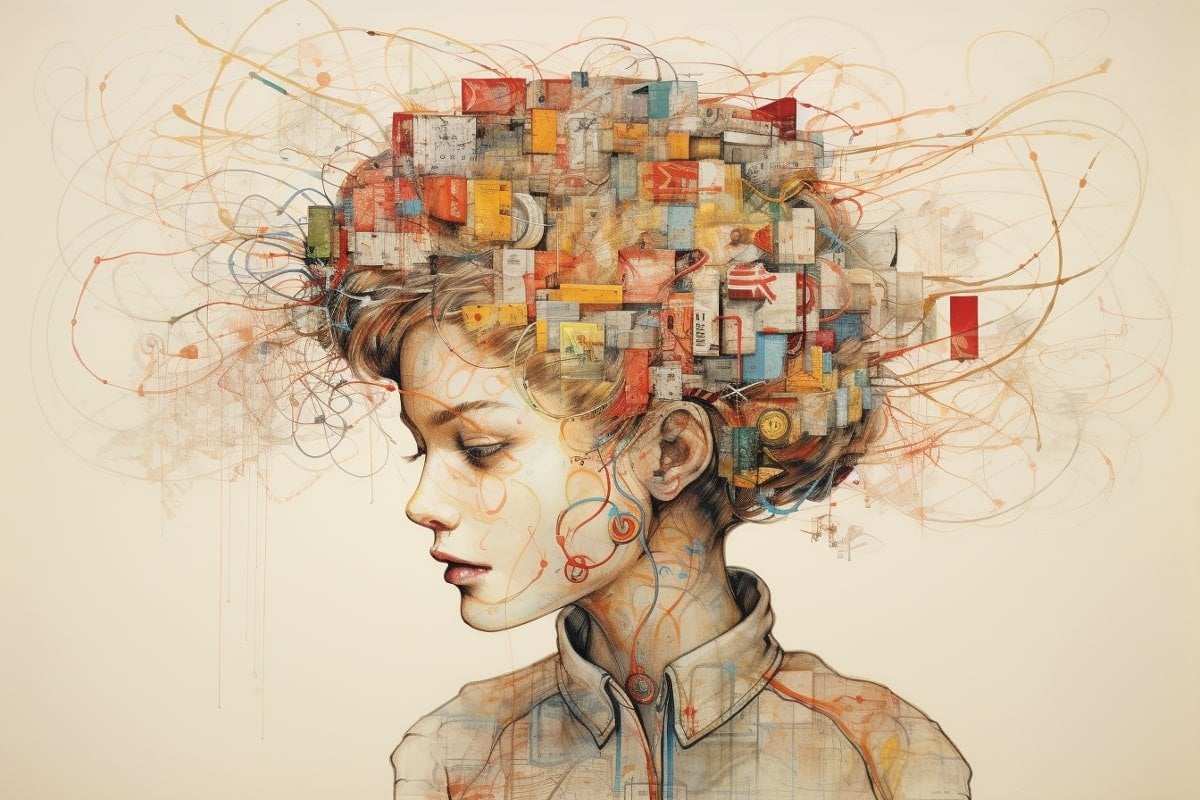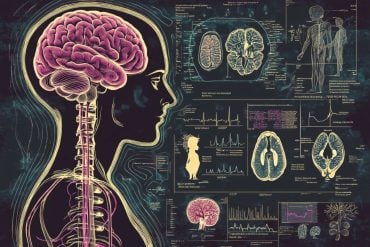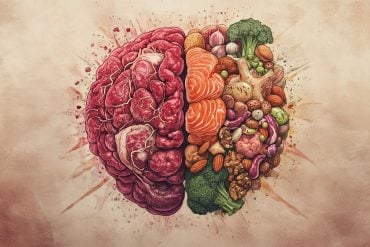Summary: Researchers discovered our capacity for visual working memory is not rigid, but can be expanded when stimuli are meaningful.
Traditional theories proposed that the capacity for visual working memory, crucial for various cognitive abilities, was fixed. However, this study found that when presented with recognizable objects, individuals were able to retain more visual information than when presented with scrambled, meaningless versions of the same objects.
This significant revelation has implications for rethinking clinical diagnostic tools and artificial intelligence systems.
Key Facts:
- Dartmouth researchers found that individuals’ capacity for visual working memory can be expanded when stimuli are meaningful.
- During experiments, participants were able to remember the color of recognizable objects better than the color of unrecognizable, scrambled versions of the same objects.
- This discovery suggests the need for a reassessment of memory diagnostic tools and could impact how artificial intelligence systems model and manipulate human behavior.
Source: Dartmouth College
Human memory is fundamental to everything we do. From remembering the faces of someone you just met to finding your cell phone that you just left on a table, one’s “visual working memory”— the core cognitive system that retains visual information in an active state for a short period of time, plays a vital role.
Prior work has found that visual working memory capacity is well correlated with other important cognitive abilities such as academic performance, and fluid intelligence, which includes general reasoning and problem solving, so understanding its limits is integral to understanding how human cognition works.
In the past, theories have proposed that an individual’s capacity for visual working memory is fixed but a new Dartmouth-led study finds that more visual information can be retained when stimuli are meaningful, demonstrating that visual working memory capacity is flexible.
The results are published in Psychological Science.
“Our findings broadly suggest that the capacity for visual working memory may be more continuous and flexible than we thought,” says lead author Yong Hoon Chung, a Ph.D. student in cognitive neuroscience and member of the Perception, Attention, and Memory Laboratory at Dartmouth.
In one of the experiments, participants were presented with images of four different colored objects on a single computer screen and instructed to remember the colors as well as possible.
They were shown recognizable objects in the “meaningful” condition, and scrambled versions of the objects in the “meaningless” condition. Next, they were presented with a blank computer screen. Then, they viewed an image of one of the objects or scrambled versions of the objects in two different colors and were tasked to identify which color they just saw. Participants were never asked about the identity of the object, only the color.
The task was “What color did you see?” not “Did you see a tea kettle?” Participants were then presented with hundreds of objects, as well as scrambled objects, both in random colors, and were tested on their color memory.
Through a series of five experiments, the researchers tested participants’ capacity for remembering the colors of recognizable real-world objects such as that of a tea kettle versus that of an unrecognizable version of the object. The team used an algorithm developed by other researchers to convert the known object into a scrambled, abstract shape that is similar in visual complexity.
The original objects and scrambled objects were then assigned random colors from a 360-degree color wheel. The idea was that earlier visual processing of the brain would be similar across both intact and scrambled objects, yet scrambled objects are unrecognizable by the observers. Thus, by scrambling the object, the meaningfulness of the stimuli is removed.
The researchers calculated how well participants were able to remember the colors of the stimuli in the meaningful versus meaningless conditions.
“Our results show that participants’ memory for color was better when they had a meaningful context,” says Chung.
“For example, people could remember the color blue better when it was part of a blue kettle than the scrambled blue shape of a jacket.”
“When colors are seen as part of something meaningful, you are more likely to remember that color,” says Chung.
The other experiments in the study were similar and served as controls to test if color memory is better with recognizable objects, which proved true across the study.
The controls included using upside-down stimuli instead of scrambled objects, or adding a verbal task on top of the visual task to rule out the prospect that color memory of the stimuli was due to verbalizing what was seen or adding a spatial cue at retrieval.
“Prior research has shown that space is one of the strongest cues that our visual working memory system uses, as it is kind of baked in to our visual representations, so we were also interested in examining if the effect of meaningfulness would remain when participants could use spatial locations to retrieve the colors,” says senior author Viola Störmer, an assistant professor of psychological and brain sciences, and principal investigator of the Perception, Attention, and Memory Laboratory at Dartmouth.
“What we found is that participants continued to remember the colors better when they were part of real-world objects and didn’t only rely on the spatial locations of where the object was seen.”
“Our study demonstrates that this higher-level semantic meaning, which draws on the long-term storage of general knowledge or in this case the recognition of an object, can help make a really low-level feature that’s not meaningful by itself, like color, meaningful,” says Störmer.
“When relatively abstract information is combined with conceptual knowledge that people already have, this can enhance one’s capacity to retain this new information better.”
“A lot of working memory measures are used as diagnostic tools in clinical settings to help identify deficits in memory, but they are based on the assumption that there is a fixed capacity for this type of memory,” says Chung.
“So, how we are testing in those fields might not necessarily be as accurate as we originally thought. It may be time to rethink the testing methodologies in order to obtain a more accurate measure of human memory,” says Chung.
“Beyond the clinical setting, our findings may also have implications for how artificial intelligence systems model and manipulate human behavior, as working memory capacity is known to be related to general capacity of human cognition.”
The research builds on Störmer’s earlier co-authored works, which have found that the ability to remember real-world objects is stronger than remembering abstract objects.
The team plans to investigate the underlying mechanisms of visual working memory using electroencephalogram (EEG) and fMRI technologies to better understand how the brain responds to the visual context of colors.
Chung ([email protected]) and Störmer ([email protected]) are available for comment. Timothy Brady at the University of California San Diego also served as a co-author of the study.
About this visual neuroscience and memory research news
Author: Amy Olson
Source: Dartmouth College
Contact: Amy Olson – Dartmouth College
Image: The image is credited to Neuroscience News
Original Research: Closed access.
“No Fixed Limit for Storing Simple Visual Features: Realistic Objects Provide an Efficient Scaffold for Holding Features in Mind” by Yong Hoon Chung et al. Psychological Science
Abstract
No Fixed Limit for Storing Simple Visual Features: Realistic Objects Provide an Efficient Scaffold for Holding Features in Mind
Prominent theories of visual working memory postulate that the capacity to maintain a particular visual feature is fixed. In contrast to these theories, recent studies have demonstrated that meaningful objects are better remembered than simple, nonmeaningful stimuli.
Here, we tested whether this is solely because meaningful stimuli can recruit additional features—and thus more storage capacity—or whether simple visual features that are not themselves meaningful can also benefit from being part of a meaningful object.
Across five experiments (30 young adults each), we demonstrated that visual working memory capacity for color is greater when colors are part of recognizable real-world objects compared with unrecognizable objects.
Our results indicate that meaningful stimuli provide a potent scaffold to help maintain simple visual feature information, possibly because they effectively increase the objects’ distinctiveness from each other and reduce interference.








